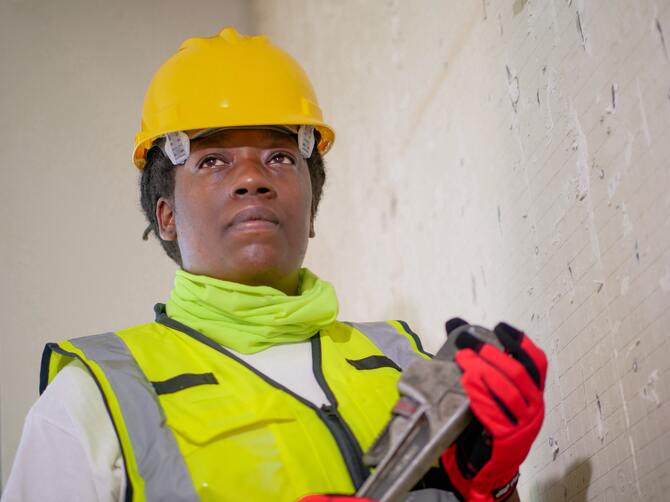Just about everyone maintains their own unique assumption in relation to When to Call a Plumber? DIY or Professional Help.

Intro
Pipes concerns can vary from minor aggravations to major frustrations, often motivating house owners to choose in between dealing with the problem themselves or employing an expert plumber. Recognizing when to DIY and when to look for expert assistance can save time, money, and protect against potential disasters. This write-up checks out the aspects to take into consideration when making this critical choice.
Benefits of Do It Yourself Pipes
Taking on pipes jobs on your own can be gratifying in several methods, particularly for simpler projects.
Complexity of Tasks
Some plumbing problems require customized expertise and tools past normal house owner abilities. Messing up complex issues can result in more damage and expensive repair services.
Safety and security Issues
Collaborating with pipes systems entails dangers such as direct exposure to water damages, possibility for electric threats, and dealing with tools incorrectly. Safety and security precautions must be observed to avoid accidents and make sure effective fixings.
Indicators to Call an Expert Plumbing
Recognizing when a pipes problem exceeds do it yourself capabilities is important to preventing worsening issues.
Indications of Facility Problems
Examples include:
Trigger specialist intervention is essential to resolve these issues successfully and minimize damage.
DIY Pipes Tips
For effective do it yourself plumbing, it's necessary to be prepared with the right tools and follow proper procedures.
Fundamental Tools and Materials
Trick devices for DIY plumbing:
Step-by-Step Guides
Clear guidelines ensure safe and efficient do it yourself fixings:
Picking the Correct Time to DIY
Figuring out when to tackle pipes tasks on your own calls for analyzing both the complexity of the problem and individual convenience levels.
Evaluation Checklist
Consider:
Cost Cost savings
Do it yourself pipes tasks usually save money by staying clear of professional service charge. Jobs like taking care of small leaks, changing taps, or installing new showerheads are instances where home owners can manage repair work without working with a plumbing professional.
Ability Improvement
Engaging in do it yourself plumbing provides a possibility to find out and boost practical abilities. Standard jobs equip homeowners to comprehend their plumbing systems better and gain confidence in taking care of small repair work separately.
Risks of DIY Plumbing
While DIY projects use benefits, certain dangers must be carefully considered prior to attempting repairs.
When to Most Definitely Call a Specialist
Specific situations require instant professional focus to stop substantial damage or safety and security dangers.
Emergency situation Circumstances
Instances include:
Finding and Hiring a Professional Plumber
Selecting a certified plumbing guarantees reputable service and comfort in resolving pipes concerns.
Criteria for Choice
Aspects to consider:
Cost Evaluation: do it yourself vs. Expert Solutions
Comparing the monetary effects of DIY initiatives versus expert pipes solutions aids in making informed decisions.
Financial Considerations
Examine:
Final thought
Choosing whether to do it yourself or call a specialist plumbing technician rests on comprehending the intricacy of pipes concerns and personal abilities. By weighing the benefits and risks, house owners can make enlightened selections that promote efficient maintenance and safeguard their homes from plumbing disasters.
DIY vs. Professional Plumbing Repairs: When to Call a Pro
When dealing with plumbing issues or embarking on renovation projects, homeowners have to decide whether or not they want professional help with their home’s plumbing system. While master plumbers can complete just about any plumbing project, they can cost a pretty penny. On the other hand, DIY plumbing projects can very quickly go awry, which can make things worse.
In this blog, we’ll explore common plumbing projects that homeowners can confidently tackle, provide insights into the essential tools needed, and discuss critical DIY mistakes to avoid. Understanding these distinctions not only helps in maintaining the efficiency and longevity of your home’s plumbing system but also ensures safety and cost-effectiveness in your repair endeavors.
Installing/Replacing Certain Plumbing Fixtures
Most homeowners should be able to install new plumbing fixtures or replace old ones that are damaged or old. Using basic tools, you should be able to effectively:
Replace faucet washers or cartridges Replace showerheads Install a new toilet seat Hook up new appliances Replace hose bibbs Unclogging Drains
You should also be able to fix any clogged drains within your home by using a plunger, plumber’s snake, or natural solutions like baking soda and vinegar. These can often clear clogged sinks or bathtubs without needing professional drain cleaning assistance.
Fixing Running Toilets
Another plumbing issue many homeowners may be able to handle is a running toilet. Toilets may run more than they should due to a faulty flapper or float inside the tank. Toilet replacement parts are easy to find and often come with easy-to-follow instructions.
Repairing Leaky Faucets
A dripping faucet can not only be an annoyance, but it can also be a waste of water. Leaky faucets can normally be fixed with basic tools and a basic understanding of how they work, making them easy to fix.
Adjusting Water Heater Temperature
If you are able to follow basic safety precautions, you should be able to adjust the temperature on your hot water heater, which can improve your home’s energy efficiency and also increase comfort.
Fixing Minor Leaks in Pipes
For small plumbing leaks, particularly ones at pipe joints, using plumbing tape or a patch kit can be a temporary fix while you decide on a more permanent solution. Repairing broken pipes, however, can be more difficult and may require professional attention.

We had been brought to that editorial on When to DIY and When to Call a Professional Plumber from a good friend on another domain. If you enjoyed reading our page please be sure to share it. Bless you for your time. Return soon.
Schedule Services